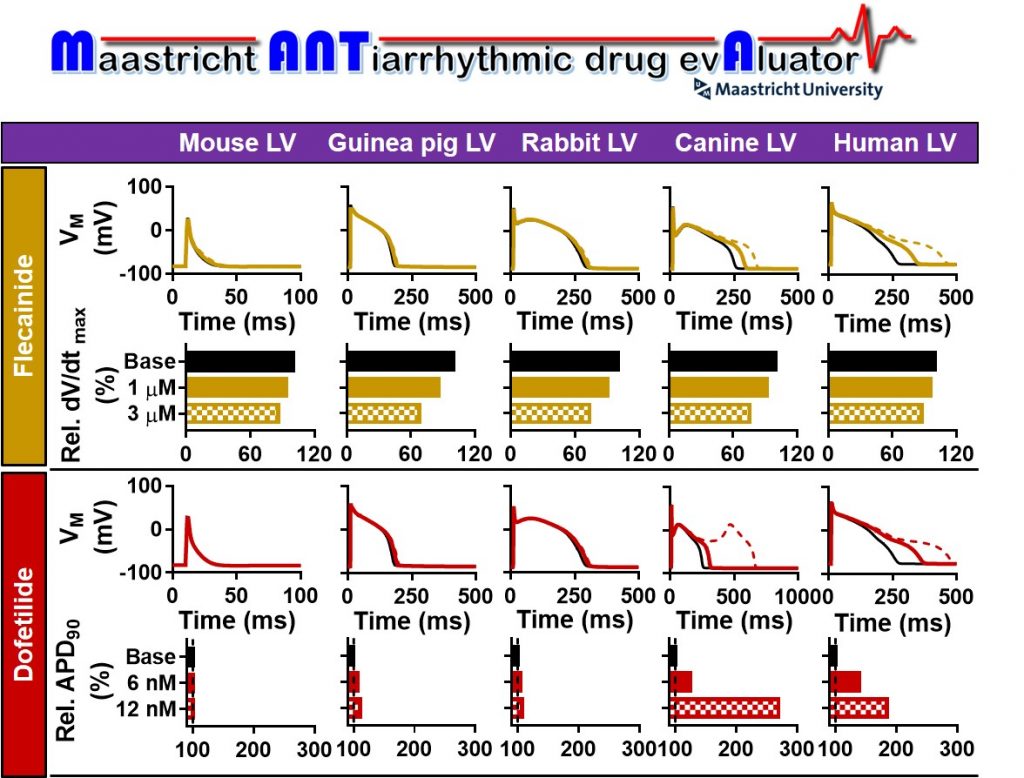Cardiac arrhythmias remain a global burden. Antiarrhythmic drugs (AADs) can be beneficial for the acute and long-term management of cardiac arrhythmias, but may also have proarrhythmic side effects. Therefore, understanding the cellular mechanisms-of-action of such drugs is important, yet challenging. In this new paper, we present the Maastricht ANTiarrhythmic drugs evAluator (MANTA), an educational tool to better understand the basic electrophysiological features of AADs. We incorporated 17 widely used computational models of cardiac cellular electrophysiology and a library of 24 AADs from various Vaughan-Williams classes into the tool, which is built using the support of Myokit. We also included state-of-the-art state-dependent regulation of INa to simulate more realistically the effects of class I AADs. MANTA facilitates the simulation of various conditions (e.g. hypo/hyperkalemia, hypo/hypernatremia, hypo/hypercalcemia, tachycardia, bradycardia, etc.) and comparison of APD, dV/dtmax, RMP and ERP from two different models side-by-side. Using MANTA we demonstrated the species-, concentration- and frequency-dependent effect of AADs. Finally, we showed how disease-related electrical remodeling can alter AAD effects. Information on how to obtain MANTA can be found here.

